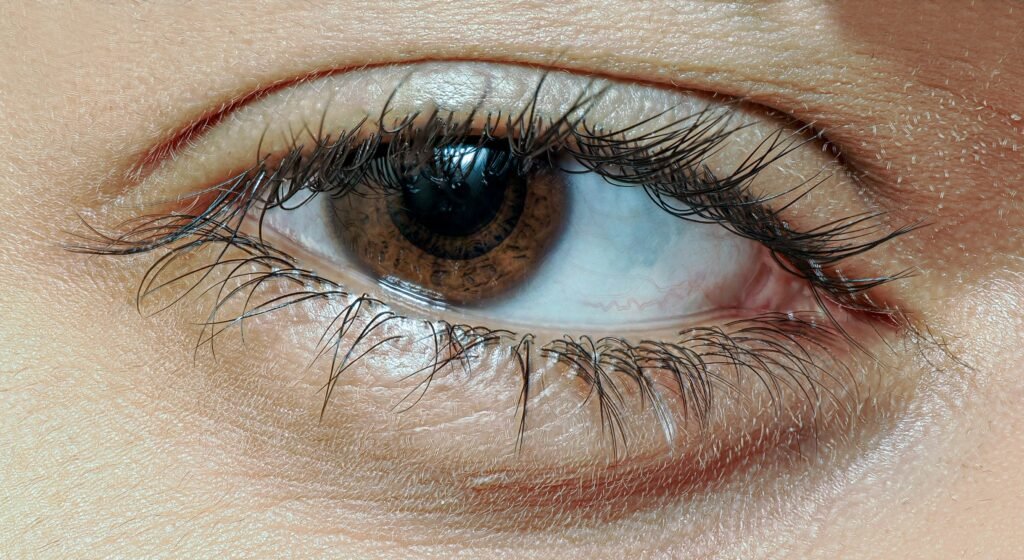Understanding Rhizotomy
Chronic pain can be a real bully, and that’s where rhizotomy steps in like a hero with a cape. This medical trick involves blocking a bully’s punches by messing with the nerves responsible for sending pain signals. Docs use precision tactics—like slicing, chemicals, or even high-tech radio waves—to sort out these pesky nerve pathways and give some peace.
Overview of Rhizotomy
Rhizotomy ain’t rocket science. It’s about giving specific troublesome nerves the boot to deal with long-lasting pain or muscle tightness. Docs get creative, using techniques from cutting to super-targeted radio waves. The goal’s simple: stop the pain in its tracks by breaking up the signals it rides on.
Types of Rhizotomy Procedures
Rhizotomy comes in flavors tailored to where the pain lives in your body. Do you have a backache that won’t quit? Lumbar rhizotomy might do the trick. If it’s the neck causing a fuss, cervical rhizotomy could be the answer. Facet rhizotomy is the way to go for those joints in your spine.
Choosing the right rhizotomy is like picking the perfect tool for a job—it depends on where and why the pain is kicking around. By crafting each approach to fit individual pain puzzles, doctors help not just squash pain but boost life quality, too.
As the pain-beating world spins on, so do rhizotomy options. With every new understanding of these procedures and by tailoring them to folks’ unique needs, the pain management game keeps leveling up. Healthcare pros are making sure chronic pain doesn’t stand a chance against evolving rhizotomy tricks.
Radiofrequency Rhizotomy
In the world of chronic pain relief, there’s a little gem known as radiofrequency rhizotomy, or, to put it simply, radiofrequency ablation. This procedure helps those who don’t find comfort from other treatments or continue suffering due to pesky scar tissue.
Understanding Radiofrequency Ablation
So, what’s the magic behind this technique? According to knowledgeable folks at Johns Hopkins Medicine, radiofrequency ablation involves zapping nerve fibers with a radiofrequency current. This nifty procedure messes with the wayward nerves, causing issues and stopping pain signals from marching up to your brain. The relief it brings can last several years until those nerves decide to return to action, letting pain signals slip through once more.
How it Works and Who It Helps
Here’s the scoop on how it goes down: A medical pro uses a special needle to bring the heat, courtesy of a radiofrequency current, right to the troublesome nerves. This heatwave confuses the nerves, blocking pain signals and giving patients a much-needed breather (Cleveland Clinic).
Now, its success can vary. Some folks walk out feeling much better, while others might need more rounds to get the full effect. Before jumping in, it’s important to chat about what to expect with your healthcare buddy.
Radiofrequency rhizotomy offers a less invasive option to tackle chronic pain that shrugs off other treatments. Having a heart-to-heart with your doctor can help you decide if this is the right path for tackling your aches and pains.
Specific Applications of Rhizotomy
Rhizotomy snips away the troublemakers in nerve roots to ease that nagging, never-ending pain. It’s a versatile approach used to fix different aches across the body. Here, we’re diving into three popular types: trigeminal ganglion rhizotomy, facet rhizotomy, and selective dorsal rhizotomy.
Trigeminal Ganglion Rhizotomy
This one’s all about putting those pesky facial nerves to rest. Perched on both sides of your face, the trigeminal ganglia can become a real pain in the neck… or face. For folks enduring facial pain, spasms, or trigeminal neuralgia, this method disrupts those pain signals, letting you breathe easily and maybe even smile without wincing.
Facet Rhizotomy
If your neck or back’s been throwing a tantrum, facet rhizotomy might be your saving grace. It zeroes in on the nerve roots, sneakily cruising through the facet joints in your spine. This is a go-to for arthritis or facet joint syndrome sufferers. Clipping these pain messengers helps tone down the agony and lets you get on with life without wincing with every twist and turn (Cleveland Clinic).
Selective Dorsal Rhizotomy
Here’s where it gets special, especially for kids with cerebral palsy who deal with spasticity. This procedure targets certain sensory nerve fibers in the lower spine to untwist troublesome muscle movements. Cutting these specific fibers helps boost muscle control and freedom, allowing kids to get around more freely and enjoy a fuller life without the constant struggle.
Rhizotomy proves it’s not a one-size-fits-all deal. Each kind tackles different pain and neurological issues, showing how personal and effective pain management can be. With this focused approach, doctors can create a treatment plan that caters to each person’s needs, making pain a thing of the past for many.
Success and Risks
When you’re eyeing radiofrequency rhizotomy to help tackle chronic pain, it’s crucial to weigh out what works and what might not be a walk in the park. Let’s lay it all out—the happy and the not-so-happy stuff.
Success Rates of Rhizotomy
Most folks who give rhizotomy a whirl find their pain takes a backseat, and spasticity quiets down a whole lot. Of course, some people might not feel much different, and that’s just life keeping us guessing. Results often hinge on which kind of rhizotomy you get (Cleveland Clinic). After the procedure, improvements usually sneak up slowly, with a mix of exercises and therapy speeding up the good vibes (Surgery Consultants of Florida).
| Type of Rhizotomy Procedure | Success Rate |
|---|---|
| Trigeminal Ganglion Rhizotomy | 85% – 90% |
| Facet Rhizotomy | 70% – 80% |
| Selective Dorsal Rhizotomy | 60% – 70% |
These numbers paint the big picture, but remember, every case is as unique as a fingerprint. Factors like what’s being treated and how the body takes to it play a part in the outcome.
Common Risks and Complications
No one wants nasty surprises, so it’s smart to consider what might happen with radiofrequency rhizotomy. Each type of procedure has its rollercoaster and quirks, and each nerve has its quirks.
Here’s a peek into what might pop up as drawbacks:
- Your skin might feel a little beat up with soreness; some mean bruises, or tiny blood spots around the procedure area (Cleveland Clinic).
- Getting an infection at the stick-it site is uncommon, but it’s on the risk radar.
- There’s a chance of muscle damage or itchiness around where the magic (a.k.a radiofrequency ablation) went down (Spine-Health).
If you’re juggling insurance hoops, be aware that radiofrequency sessions have a “not more than two-a-year” clause for certain spinal regions (CMS).
Before you jump in, a heart-to-heart with your healthcare team is golden. Clear up all the shiny pros and murky cons to make decisions that keep you at ease and on the path to feeling better.
Post-Procedure Experience
When folks go through a radiofrequency rhizotomy, there’s a bit of a journey ahead. This post-procedure stretch isn’t just about sitting tight; it’s about handling what pops up and getting back to feeling good as new.
Recovery Process and Symptoms
Right after that radiofrequency ablation, it might feel like you’ve spent too long lounging in the sun—redness and all. Don’t worry, this is pretty normal and manageable. Expect some nagging soreness, a sprinkle of tenderness, and maybe even a dash of discomfort. Throw on those ice packs and grab some over-the-counter pain relief like it’s your new best friend, and you should be on your way to feeling better (Spine-Health).
The pace of bouncing back is different for everyone, but relief usually starts seeping in gradually. Initial soreness might hang around for a bit, but don’t fret. Stick to what the doctor ordered post-op; you’ll be back in action soon enough.
Management of Side Effects
Some folks might run into a few hiccups that need some TLC after this procedure. Scary issues? Not really on the table, but keep an eye out for any nagging pain. Apart from that sunburn-like feeling, there might be itchiness or some peculiar tingling vibes.
If the pain is bugging you more than it should, your healthcare crew might suggest pain meds, physical therapy, or other tricks to make you comfy and aid the healing groove. Chatting up your doctors if something feels off or is just plain weird is smart.
Getting the jitters over side effects is understandable, but most folks find chronic pain relief with the proper post-op care. Keeping tabs on how you’re feeling, making those follow-up appointments, and sticking to the recovery plan are your golden tickets to bouncing back and saying bye to that pain.
Considerations and Controversies
When discussing rhizotomy procedures, especially radiofrequency rhizotomy, it’s crucial to understand their effectiveness and the buzz surrounding their role in managing chronic pain.
Cost vs. Benefits of Rhizotomy
Figuring out if radiofrequency rhizotomy is worth the money for chronic pain relief is a hot topic. The up-front cash for these procedures can be hefty because of all the fancy gear and expert hands needed. But, some studies say that it might save you some bucks in the long haul. The Surgery Consultants of Florida note that the value comes from cutting down on those regular meds and doctor visits. So, for folks looking for lasting pain relief, this might be the ticket.
To get a handle on the finances of picking rhizotomy over old-school pain treatments, you gotta look at those initial costs alongside the long-term perks, like ditching some meds and healthcare check-ups.
The Debate on Diagnosis and Treatment
There’s quite a bit of back-and-forth about diagnosing and dealing with chronic pain issues, especially around the facet joints, and this stirs the pot on whether radiofrequency rhizotomy is the right call. It works great for some folks, but there’s still a lot of chatter about whether it’s the best choice in certain scenarios.
Usually, folks try out the other options first, you know, physical therapy, pills, maybe a few lifestyle tweaks, before jumping into procedures like facet rhizotomy. According to CMS, trying non-invasive methods is key when tackling chronic pain.
Facet joint pain relief injections aren’t without their skeptics, especially when it comes to effectiveness with options like steroid shots. It’s a bit of a toss-up, making us all wonder what the best way forward is: go invasive or stick with non-invasive.
Even though radiofrequency rhizotomy can be a solid option for managing chronic pain, the debates around its usage highlight how important it is to tailor treatments to each person. That means knowing what’s going on with the patient before going for these procedures. We’ve got to balance the bank with how well the treatment works and keeping patients happy and healthier. Understanding these dynamics is key to making the right choices in chronic pain management.












